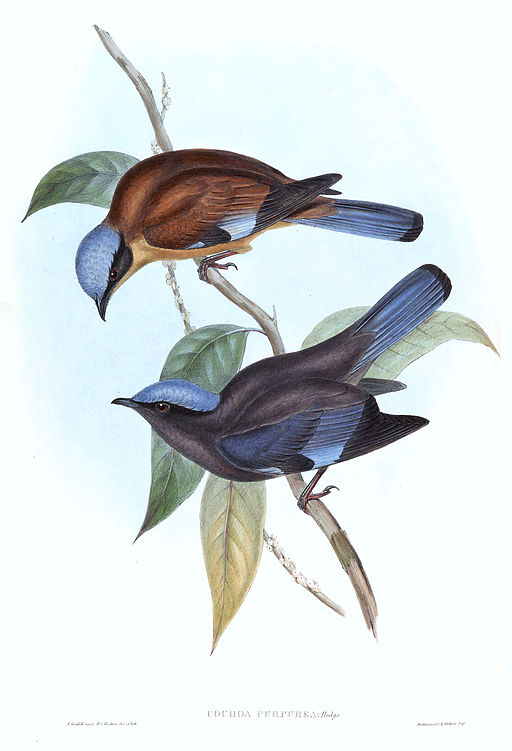Superregnum: Eukaryota
Cladus: Unikonta
Cladus: Opisthokonta
Cladus: Holozoa
Regnum: Animalia
Subregnum: Eumetazoa
Cladus: Bilateria
Cladus: Nephrozoa
Superphylum: Deuterostomia
Phylum: Chordata
Subphylum: Vertebrata
Infraphylum: Gnathostomata
Megaclassis: Osteichthyes
Cladus: Sarcopterygii
Cladus: Rhipidistia
Cladus: Tetrapodomorpha
Cladus: Eotetrapodiformes
Cladus: Elpistostegalia
Superclassis: Tetrapoda
Cladus: Reptiliomorpha
Cladus: Amniota
Classis: Reptilia
Cladus: Eureptilia
Cladus: Romeriida
Subclassis: Diapsida
Cladus: Sauria
Infraclassis: Archosauromorpha
Cladus: Crurotarsi
Divisio: Archosauria
Cladus: Avemetatarsalia
Cladus: Ornithodira
Subtaxon: Dinosauromorpha
Cladus: Dinosauriformes
Cladus: Dracohors
Cladus: Dinosauria
Ordo: Saurischia
Cladus: Eusaurischia
Subordo: Theropoda
Cladus: Neotheropoda
Cladus: Averostra
Cladus: Tetanurae
Cladus: Avetheropoda
Cladus: Coelurosauria
Cladus: Tyrannoraptora
Cladus: Maniraptoromorpha
Cladus: Maniraptoriformes
Cladus: Maniraptora
Cladus: Pennaraptora
Cladus: Paraves
Cladus: Eumaniraptora
Cladus: Avialae
Infraclassis: Aves
Cladus: Euavialae
Cladus: Avebrevicauda
Cladus: Pygostylia
Cladus: Ornithothoraces
Cladus: Ornithuromorpha
Cladus: Carinatae
Parvclassis: Neornithes
Cohors: Neognathae
Cladus: Neoaves
Cladus: Telluraves
Cladus: Australaves
Ordo: Passeriformes
Subordo: Passeri
Infraordo: Passerida
Superfamilia: Muscicapoidea
Familia: Turdidae
Genus: Cochoa
Species: Cochoa purpurea
Name
Cochoa purpurea Hodgson, 1836
Vernacular names
References
The Journal of the Asiatic Society of Bengal 5 p. 359
The purple cochoa (Cochoa purpurea) is a brightly coloured bird found in the temperate forests of Asia. It is a quiet and elusive bird species that has been considered to be related to the thrushes of family Turdidae or the related Muscicapidae (Old World flycatchers). They are found in dark forested areas and is found in the canopy, where it often sits motionless.
Description
This bird appears dark in the shade of the forest and the colours become clear only when it is lit by the sun. The crown is silvery blue and a black mask runs over the eye. A grey carpal patch is present at the base of the black wing feathers and a wing patch is prominent. The tail is silvery blue with a black terminal band. The male has dull purplish grey secondaries and coverts and the body is greyish while the female has rufous replacing the purple.[2][3][4]
An artist's illustration of both male and female.
The genus name is from the Nepali word for the bird and was used by Brian Houghton Hodgson.[5][6] The family position of the cochoas has been unclear with some sources suggesting that they belong to the Muscicapidae while others have suggested them to be in the family Turdidae. The latter suggestion has found more support in recent molecular studies.[7]
Distribution and habitat
It is found in Bangladesh, Bhutan, China, India, Laos, Myanmar, Nepal, Thailand, and Vietnam. In India, it is found along the Himalayas with the western limit about 100 km west of Musoorie.[8]
Its natural habitats are subtropical or tropical moist lowland forests and subtropical or tropical moist montane forests.
Behaviour and ecology
The species is not very active and is found mainly in the canopy. The breeding season is May to July, when it builds a cup shaped nest in a fork. The nest is covered with moss, lichens and a white thread-like fungus which is said to be distinctive. Three pale sea-green eggs with some blotchy markings are laid and both sexes take turns in incubation. The birds are shy at the nest and slip away even when disturbances are afar.[9] The song consists of is a low whistle while other calls include a sit and soft trrrs.[2] Charles Inglis reported that the birds have an iora-like whistling call in the mornings and evenings.[10] These cochoas feed on berries, insects and molluscs.[9][11] While picking fruits from trees they were observed behaving like flycatchers doing short sallies.[12]
References
BirdLife International (2016). "Cochoa purpurea". IUCN Red List of Threatened Species. 2016: e.T22710144A94236723. doi:10.2305/IUCN.UK.2016-3.RLTS.T22710144A94236723.en. Retrieved 13 November 2021.
Rasmussen PC & JC Anderton (2005). Birds of South Asia: The Ripley Guide. Volume 2. Smithsonian Institution and Lynx Edicions. p. 371.
Oates, EW (1890). Fauna of British India. Birds. Volume 2. Taylor and Francis, London. pp. 159–160.
Hussain,SA; Waltner,Robert C (1975). "Occurrence of the Purple Cochoa Cochoa purpurea Hodgson, near Mussoorie, U.P." J. Bombay Nat. Hist. Soc. 72 (2): 552.
Jobling, James A. (1991). A Dictionary of Scientific Bird Names. Oxford University Press. p. 57. ISBN 0-19-854634-3.
Hodgson, B.H. (1836). "Description of two new species belonging to a new form of the Meruline Group of Birds, with indication of their generic character". Journal of the Asiatic Society of Bengal: 358–360.
Sangster, G; Per Alström; Emma Forsmark & Urban Olsson (2010). "Multi-locus phylogenetic analysis of Old World chats and flycatchers reveals extensive paraphyly at family, subfamily and genus level (Aves: Muscicapidae)" (PDF). Molecular Phylogenetics and Evolution. 57 (1): 380–392. doi:10.1016/j.ympev.2010.07.008. PMID 20656044.
Jamdar, Nitin (1986). "Notes on Orange Parrotbill (Paradoxornis nipalensis), Blackfaced Flycatcher-Warbler (Abroscopus schisticeps) and Purple Cochoa (Cochoa purpurea) from Garhwal Himalayas". J. Bombay Nat. Hist. Soc. 83 (2): 444–446.
Ali, S. & S.D. Ripley (1998). Handbook of the birds of India and Pakistan. Volume 9 (2nd ed.). Oxford University Press. pp. 17–19.
Inglis, C.M (1935). "The Purple Thrush (Cochoa purpurea)". The Journal of the Darjeeling Natural History Society. 10 (1): 28.
Baker, ECS (1924). Fauna of British India. Volume 2 (2nd ed.). Taylor and Francis, London. pp. 184–185.
Viswanathan, Ashwin; Naniwadekar, Rohit (1 February 2015). "Diet and foraging behaviour of Purple Cochoa Cochoa purpurea in Namdapha National Park, India". Forktail. 30: 145–147.
Retrieved from "http://en.wikipedia.org/"
All text is available under the terms of the GNU Free Documentation License


